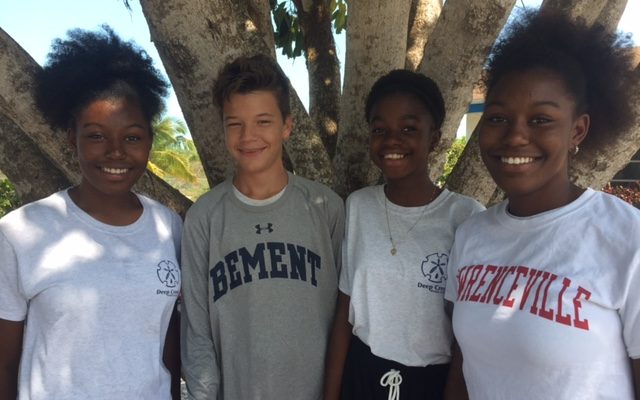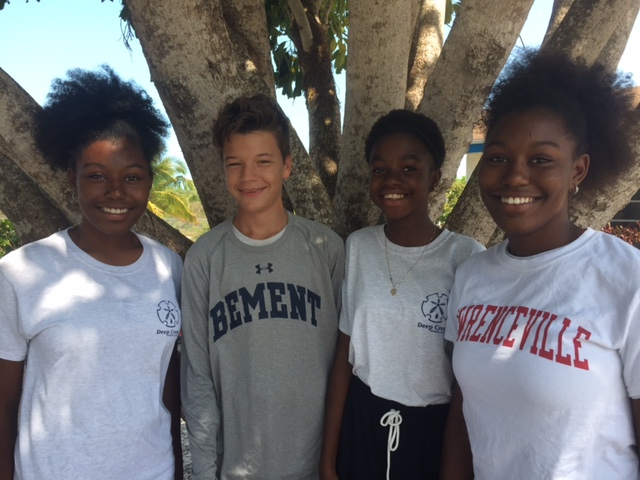Earlier this month, representatives from the Cape Eleuthera Institute headed to Rock Sound to provide the science background behind an art show showcasing a local hidden treasure: the parrotfish. The art show was organised by CEI intern Aneri Garg and hosted by Holly Burrows at her gift shop, The Blue Seahorse. The event was open to Eleutheran visitors and residents, designed to promote a local business and inform the public about the ecological importance of parrotfish.
Interns Aneri Garg and Hannah Hauptman give a short presentation to the art show guests with Research Assistant Roxy de Waegh.
The CEI Reef team, in collaboration with the Institute for Socio-Ecological Research (ISER Caribe), has been working on an outreach and social science project for the past few months, aimed at understanding the demand of the local parrotfish fishery. They also wanted to establish the level of local knowledge about the role of these fish across the Caribbean and their importance as a reef grazing fish. CEI worked with Deep Creek Middle School (DCMS) to visit communities across South Eleuthera, surveying local fisherman and the general public. This project inspired the middle school students to include parrotfish in their art projects. They created a comic book and choreographed a lyrical music video narrating the story of a young parrotfish called Charlotte. We loved working with the students and enjoyed watching their passion grow as they informed their local community using their nascent knowledge of reef ecosystem processes. We proudly played their music video for local residents at The Blue Seahorse and included a short presentation about the vital role parrotfish play by grazing on the algae that builds up on coral reefs.
You can watch their music video here.
The team proudly display the work of Deep Creek Middle School students.
In other places across the Caribbean, such as the Dominican Republic, parrotfish are extensively sought after and fished in great quantities. This is particularly concerning for parrotfish as they are sequential hermaphrodites, meaning they are born female and change to male later on in life. Female parrotfish congregate in groups and eventually the largest, most dominant female changes to male, who then has mating rights over this harem of females. As the demand for parrotfish across the Caribbean increases, they are fished at a smaller size and a younger age. Subsequently, they may be removed before the time at which they change to male. This will alter the male to female ratios of local populations, limiting their breeding capabilities and could exacerbate population decline.
The preliminary results of the questionnaires show that few of the people we interviewed around Eleuthera had eaten parrotfish and most had never seen one for sale. This data will be added to a Caribbean-wide database of surveys, collected by other ISER Caribe collaborators, showing the demand for a parrotfish fishery across this region. These results can be used to devise a site specific, realistic education and conservation strategy to effectively spread information about the role of parrotfish across the Caribbean. We hope this campaign will increase ecological awareness across small fishing communities, reminding people about the importance of long-term sustainable fishing practices.
We were pleasantly surprised by the results of our local surveys, as we found that most people in Eleuthera understood the role of parrotfish and how their removal would negatively impact reef systems. We hope that these results are representative of the whole population of Eleuthera and The Bahamas and that parrotfish continue to be respected and sustainably exploited. CEI will carry on their work with nearby communities, learning from their local expertise and educating them about current research efforts.

